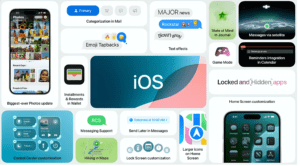ButSpeak.com
News which Matters.

The much-anticipated day has arrived: Apple has officially announced that its Messages app will support Rich Communication Services (RCS) starting with iOS 18. This major update will replace SMS as the default communication protocol between Android and iOS devices, marking a significant shift in cross-platform messaging.
After years of industry pressure and regulatory scrutiny from the EU, Apple is finally adopting the RCS standard. The move is expected to improve the messaging experience between iOS and Android users by providing features such as typing indicators, read receipts, the ability to send longer messages, and support for higher-quality images and videos. Essentially, RCS offers a messaging experience similar to Apple’s iMessage but for cross-platform communication.

Currently, when iOS and Android users message each other, the system defaults to SMS, leading to lower quality photos and videos, shorter messages, and a lack of end-to-end encryption. Messages from Android users appear as green bubbles in iMessage chats, often causing confusion and discontent among users. The introduction of RCS aims to address these issues, bringing iMessage-like features to cross-platform conversations.
Although Apple has not released extensive details about the RCS integration, the company’s website offers a glimpse of the new functionality. A screenshot shows the text field displaying “RCS,” indicating an active RCS connection. Beyond this visual cue, the interface appears largely unchanged.
Despite pressure campaigns from tech giants like Google and Samsung, Apple’s decision to implement RCS likely stems from regulatory pressures rather than industry influence. In November, Apple announced the upcoming RCS support, a move widely seen as a response to EU regulators’ scrutiny.
The adoption of RCS by Apple in iOS 18 is a significant development in the world of digital communication, promising a more seamless and feature-rich messaging experience for users across different platforms.




